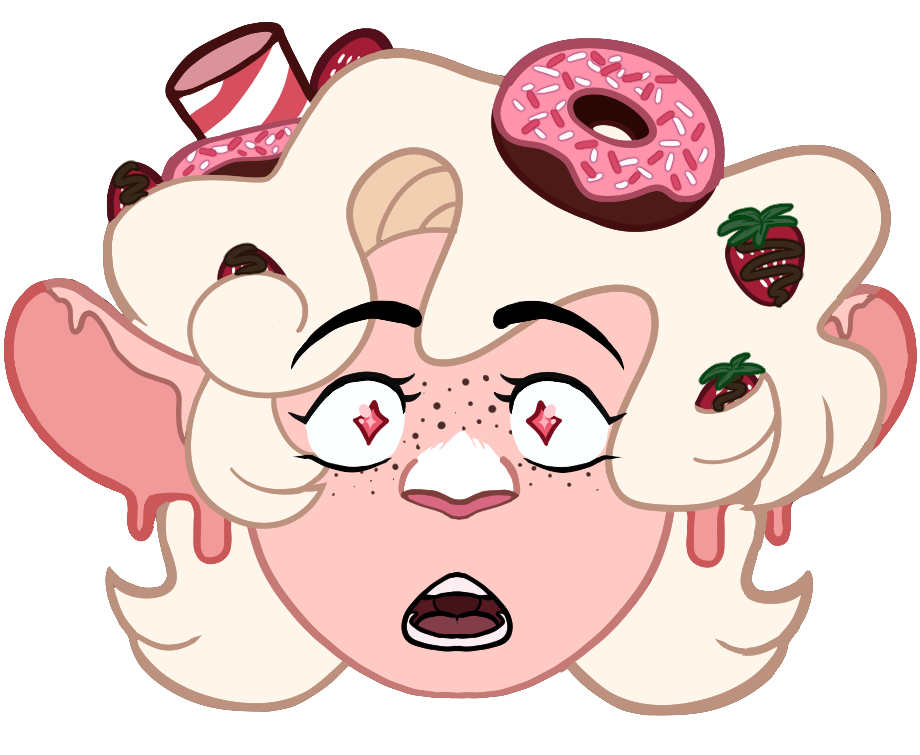 DEVELOPMENT
DEVELOPMENT
How is a milki born? What are they like when they're young? How long do they live? You can find the answers to those questions here!
How is a Milki made?
- To make offspring Milki's have to buy a specially made glass. They then cut off enough of their body (ex. arms, milkshake tails, ears, etc) to fill the glass, put it in the freezer for a few months, and when they pull it out the baby is ready. Sometimes, two Milki will form out of one glass. If caught early, the second baby can be transferred to it's own glass. If caught too late, the twins will become conjoined. The infant Milki will remain in a freezer for about a year, and during this time their headpiece, hand, ears, and tail traits will become apparent, as well as the color of their glass body.
- Infant Milkis have very thick glass, that thins out as they get taller! The thick glass helps protect them from being too warm or breaking from falling. After they are removed from the freezer, their accessories and toppings will slowly start to form. By two years old, they have all their toppings.
Childhood and Adolescence
- During childhood, the thickness of the glass begins to thin out as they age. As such, the glass is much softer and more malleable than it will be when they stop growing. This is so the body can develop it's 'natural' shape. However, because of this, teenagers will often attempt to self mold their glass, which is a concern for parent milkis as it can result in the form not being stable enough to keep their child together. In most cases, self molding doesn't stick and the body naturally reverts itself to it's natural shape.
- During adolescence, milkshake, whipped cream, and mousse tends to develop much more rapidly. This leads to a LOT Of haircuts and embarrassing fringes and bangs all over the place. Nervousness tends to be more obvious in teen/tween Milkis as they tend to be more runny when they get antsy. Besides the typical nervous movements like wiping their palms on their hips or wringing their wrists, teen Milkis get runny too, and they're often teased for it.
Adulthood and Aging
- The average lifespan of a normal milki is approximately 150 years. However, they spend most of these years in what's considered the prime of their life! Adolescence is typically considered over by 18 years of age (though some argue 18 is too young to be considered an adult), and 'old age' is really only within the last 50 years of the average lifespan. Meaning, a milki is not considered an elder until they're atleast 100 years old.
- When a milki reaches their 100th year, their milkshake will begin to change consistency. It gets gooier; they get "wrinkles" because the milkshake consistency changes to be clumpier; and they make less of it, until eventually they run out of enough to sustain them-self; There is no milkshake left to retain their form. Unlike hypo-replacement, This can't be helped with donations from other Milki. The aging process is the same for other subspecies of milki (Extremies, Milkmaids, Melticores), but their lifespans may be different than a normal Milki.